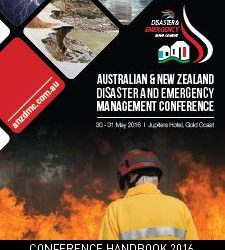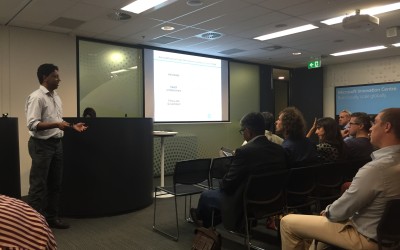News
QSPectral:Invited presentation at Quantum Australia Conference, Brisbane, March 2025
Quantum Pre-processing for Machine Learning Applications in Industry
Preprocessing Examples
1. Classifying data before applying other methods
2. Image recognition with noisy data
3. Protein sequencing for processing Rare Earth Elements (REE)
QSPectral presented a talk on “Artificial Intelligence for Predicting Start-up Success” at the Australian Centre for Entrepreneurship Research Exchange (ACERE) conference in February 2023.
QSPectral presented on Quantum Computing for Simulating Successful Ventures: Investor Portfolio Optimisation at IFORS 2021
We propose that by simulating the startup eco-system as a Brownian motion model with data driven drift and diffusion parameters analogous to methods used in stock analysis, we can provide more rigour and insight in this challenging decision-making scenario.
Given that the model is analogous to a well understood physical system that has quantum effects, we will also show that this method is amenable to using more computationally competitive quantum algorithms that have the potential to solve larger scale and currently intractable scenarios.

QSPectral presents invited talk at Emerging Big Data Technologies Summit
Data Driven Decision Making from Remote Health Monitoring to Venture Prediction
Health systems face an increasing demand on resources, as the world’s population ages. Technology in the form of sensor-based remote monitoring systems has emerged as a viable option to mitigate this asymmetry between supply and demand enabling vulnerable individuals to live at home safely and independently. We will present novel data driven systems for sensor based human activity recognition, chronic disease monitoring as well as health risk assessment.
The advance of analytics methods provides a means to contextualise and aggregate data from disparate devices in a meaningful manner.
In this presentation, we will also discuss applications across a number of domains including the exciting area of data driven evaluation of startup
QSPectral-Uni Adelaide Paper on Networks for Military Operations at MiLCIS 2016
Achieving Policy Defined Networking for Military Operations Authors: Hung Xuan Nguyen, Michael Webb (The University of Adelaide, Australia); Sanjeev Naguleswaran (QSPectral Systems, Australia)
Abstract. In the past few years, significant progress has been made in software defined networking in a quest to increase automation, improve network agility and security, simplify network configuration and reduce resources to establish and maintain the network. There are now a vast number of studies exploring how to utilise policies to achieve these goals. Applying outcomes of these studies to military networks requires a clear understanding of military applications and available mechanisms to implement the appropriate policies in a software defined networking environment. In this paper, we identify several military networks where automatic policy defined networking is crucial. We further present a prototype policy defined networking solution that automatically translates high-level policies into device level implementations.
At Brisbane’s new “Capital” Innovation Space
myQ clinical decision support powered by QSpectral analytics
QSpectral’s MonitorMyHealth analytics is enabling myQ Decision Support in Singapore on our partner myHealthSentinel’s Telehealth platform.
http://www.prweb.com/releases/2016/07/prweb13528473.htm
Australia & New Zealand Disaster and Emergency Management
Sanjeev presents Monitor-My-Health at HealthTech Forum
QSPectral director Sanjeev Naguleswaran presents Monitor-My-Health (MMH) analytics at the HealthTech forum held at the Microsoft Innovation Centre
Sanjeev talks about MMH Telehealth analytics at TEDX South Bank









Recent Comments